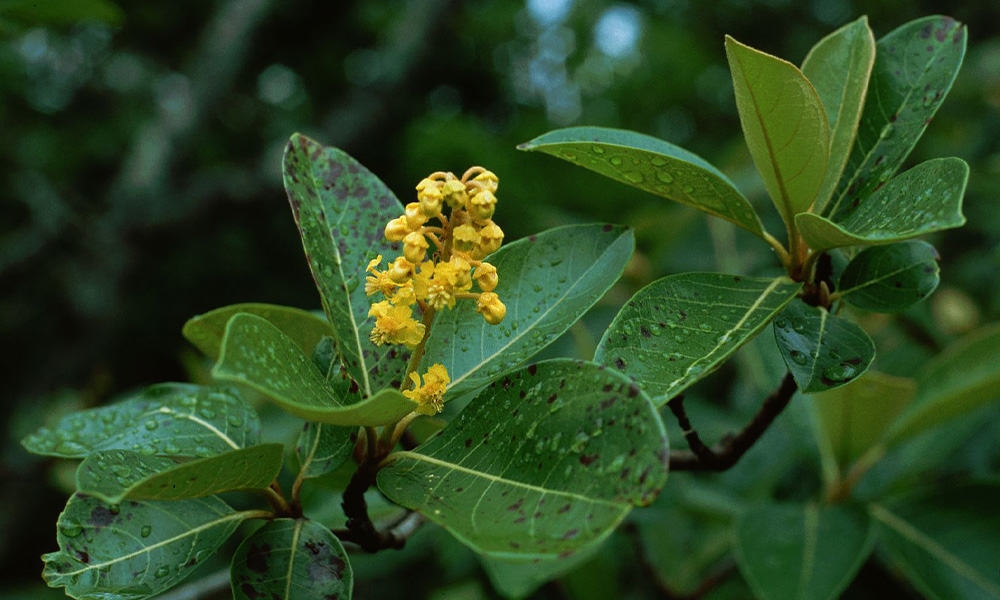I’ve had a lifelong interest in wildlife. If asked, my mother would happily show you home videos of me in a onesie sitting in wonky positions on the sofa happily watching shows introducing me to the strange and wonderful creatures of the world.
The forests that many of these creatures called home were of interest simply because they housed the objects of my affection. These days, as a wildlife enthusiast that wears adult man pants, I’m still mostly focused on Costa Rica’s fauna, but my interests have expanded to include flora as well.
Wildlife facts stick in my head easily. At times my wife will snap open one of my wildlife books to a random page and quiz me on a fact about a bird, reptile, or mammal.
“What creature makes up a large percentage of the jabiru’s diet?”
“Eels!”
“That’s weird. Why do you know that?”
I know that because jabirus are interesting giant birds and eels are interesting squirmy creatures, and I remember reading that exact passage. Later, I happened to see a jabiru wolf down a long, undulating eel in a flooded rice field on a sugarcane farm and thought, ‘Huh, the book was right.’
Conversely, facts about Costa Rica’s many trees stick in my mind about as well as a new Spanish word. I need to hear it multiple times or have some sort of direct experience over and over again for anything to get banked into my memory. After eleven or so years of interacting with and learning about a few of Guanacaste’s trees, a few things have finally stuck, and I’ll share them with you.
Nance
The nance tree is a fairly small tree, growing to about 13 meters tall. These trees are famous for the little fruits that they produce. The timing can vary but they start to produce clusters of yellow and orange flowers from March to June and the fruit appears from about April to August. While I don’t care for the taste, most Ticos and a whole host of wildlife including birds, monkeys, iguanas, and collared peccaries love them.
I have a big nance in my front yard that the howler monkeys love to visit during the fruiting time of year. The tree is called nance and the fruits are called nancites, and you better not mess that up. I’ve incorrectly stated that my nancite tree is producing nancites, and I was quickly corrected.
Papaturro
Papaturros are medium sized trees that I’ve noticed often grow in wetter, low lying areas. They have many trunks emanating out of the soil together in a big cluster. These trees produce long strings of white flowers that eventually turn into long strings of white fruits that are apparently delicious. My wife had some sort of wonderful experience eating papaturro fruits in the past and is shocked and disappointed to this day that I still haven’t tried it.
I like papaturro trees because they keep their broad green leaves all year, so when most trees have lost their foliage in the height of Guanacaste’s dry season, papaturros are a shady hideaway where I’ve spotted mantled howler monkeys, Mexican hairy porcupines, and spectacled owls.
I was once forced to spend 30 minutes in a papaturro tree while retrieving a camera trap set up to record spectacled owls. An enormous bull claimed the area under the tree and I had to wait for him to move on before I lowered myself down.
Guácimo
Guácimos are prevalent in Guanacaste. They’re one of the first trees that show up when a forest starts to regrow from an abandoned field. Once you know what they look like, you see them everywhere. These trees produce sweet smelling white flowers at different times of the year but often in March and April.
A few years ago, I noticed mantled howler monkeys chowing down on the flowers in the trees in my yard and have noted it every year since. The flowers eventually mature into these hard, black, bumpy pinecone/acorn-like fruits that look and feel completely inedible but are eaten by a wide variety of wildlife.
For a long time, while checking camera traps after the first rains after a long dry season in Guanacaste, I would notice a delicious smell, sort of like baked cake in the forest. It took me years to figure out that it was coming from the newly dampened guácimo fruits on the forest floor.
Costa Rica’s biodiversity is what attracted me here and the life histories and behaviors of its many creatures will always fascinate me, but there’s a whole other world to explore in the form of the vast array of tree species that live in the land of pura vida. Of course, these two worlds are inextricably linked, and as I continue to learn more about them, I’ll be sure to pass that information on to you.
About the Author
Vincent Losasso, founder of Guanacaste Wildlife Monitoring, is a biologist who works with camera traps throughout Costa Rica. Learn more about his projects on facebook or instagram. You can also email him at: vincent@guanacastewildlifemonitoring.com

